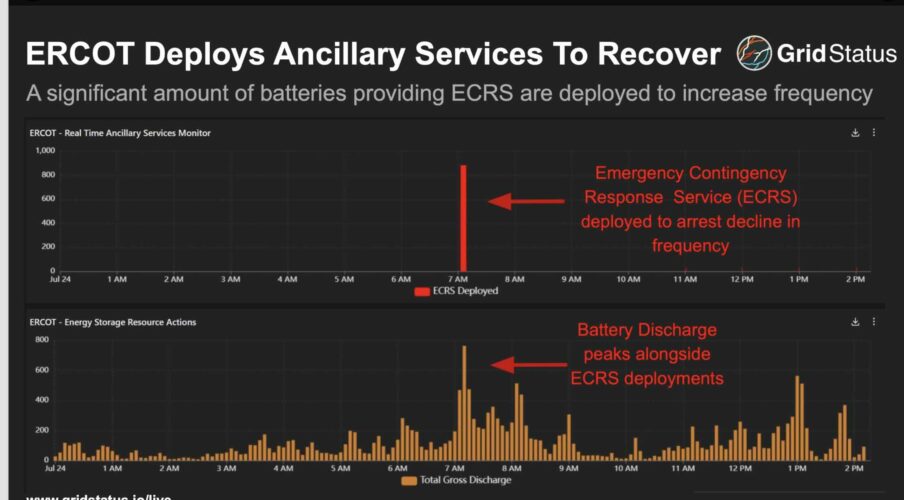What happens when a giant nuclear power station suddenly goes off line? It’s a question that market operators have to ask themselves all the time, and one that the Coalition might want to put should its fanciful nuclear plan every come to pass.
The biggest units on the grid are generally nuclear, in those countries that have them, and a considerable amount of planning and expense needs to make sure that the back-up is on hand, despite the insistence by some of the whackier pro-nuclear spruikers in Australia that no storage or gas is needed.
The biggest unit in the Australian grid is the 750 megawatt (MW) Kogan Creek coal fired power station in Queensland. Nuclear units are often nearly twice the size, and last week a 1,322 MW unit at the South Texas nuclear facility suddenly tripped due to a fire in the switchyard.
According to Grid Status, which monitors grid operations in the US, the frequency excursion was arrested by a rapid response from the state’s rapidly growing portfolio of big battery projects.
“Immediately, grid frequency declined,” Grid Status noted in a post on LinkedIn and X. “An excursion below critical levels required a fast response by ERCOT to ensure stability of the grid. In this case, ERCOT swiftly deployed ancillary services, including a significant amount of batteries providing ECRS, to boost the frequency back to normal.”
ERCOT is the Electricity reliability Council of Texas, which manages the grid. ECRS refers to the contingency reserve service.
The big batteries were back in action a few days later when one of the state’s coal fired power station units also tripped.
Texas is expected to more than double its battery storage capacity in 2024, adding around 6.4 GW of battery capacity (with varying levels of storage), to the 5.5 GW that existed before.

The response of the battery capacity to the nuclear trip underlines the fact that all forms of energy generation need back up – whether it be for lulls caused by weather conditions or by sudden or planned losses of large amounts of capacity due to unexpected trips, storms, fires or maintenance.
In nuclear dominated Ontario, where more than half of electricity generation is sourced from nuclear, two of the world’s biggest batteries are being built to help even out supply and demand.
One of those batteries will be built by Neoen, and it has been contracted to store energy in the middle of the day – when the output of nuclear is often surplus to requirements – and reinject it into the grid in the evening peaks. It has a similar contract in Western Australia to soak up solar, rather than nuclear, in the middle of the day.
It’s interesting to note that when the Texas nuclear plant tripped – it is still out of action 10 days later – the usual pro-nuclear tried to blame the ramp up of rooftop solar, even though rooftop PV hadn’t actually ramped up at that stage.
Those claims were nonsense of course, as are many of their claims. The fire was confirmed by the US Nuclear Regulatory Commission, which said it occurred in the switchyard and was put out within two hours on July 23. There were no further impacts. The nuclear unit still has not resumed operations.
For a whole bunch of reasons, nuclear is not always on. Just like any other form of generation, you need back up and a plan B.








